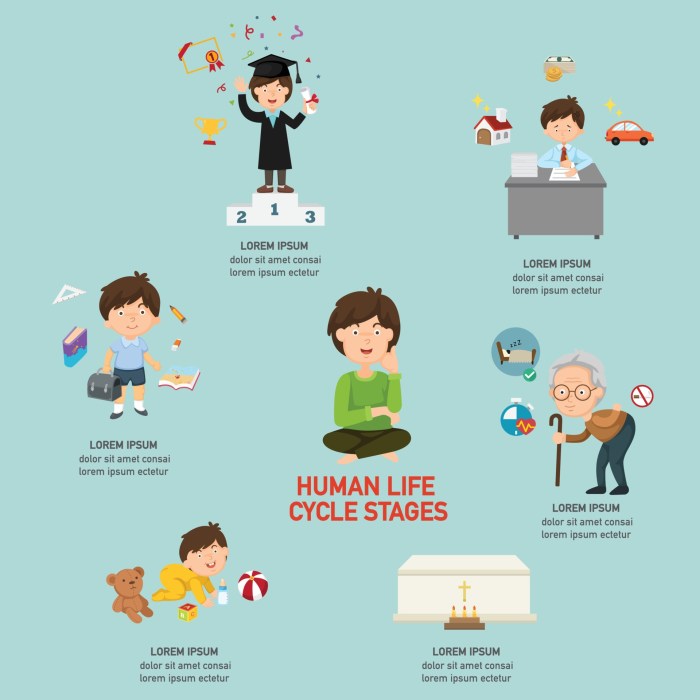Ciclo de vida de la calabaza – The life cycle of pumpkins is a fascinating journey that unfolds over several stages, each marked by unique developments and transformations. From the humble beginnings of a tiny seed to the emergence of a mature fruit, the pumpkin plant undergoes a remarkable metamorphosis.
The following paragraphs will delve into the intricate details of each stage, providing a comprehensive understanding of the pumpkin’s life cycle.
Germination and Seedling Stage

Pumpkin seeds require specific conditions to germinate and initiate growth. These conditions include adequate moisture, warmth, and oxygen.
Once the conditions are met, the seed absorbs water and begins to swell. The seed coat cracks open, and the radicle, or primary root, emerges. The radicle grows downward, anchoring the seedling in the soil. The hypocotyl, or stem, grows upward, and the cotyledons, or seed leaves, unfold.
Root System
The root system of a pumpkin seedling consists of a primary root and several lateral roots. The primary root grows deep into the soil, providing support and anchoring the plant. The lateral roots spread out near the surface of the soil, absorbing water and nutrients.
El ciclo de vida de la calabaza es un proceso fascinante. Desde la semilla hasta la cosecha, la calabaza pasa por distintas etapas. Curiosamente, al igual que el subtests of the celf 5 , cada etapa proporciona información valiosa sobre el desarrollo de la calabaza.
Al comprender el ciclo de vida de la calabaza, podemos apreciar mejor su valor nutricional y su papel en nuestro ecosistema.
Leaf Structure
The cotyledons are the first leaves that emerge from the pumpkin seedling. They are simple, heart-shaped leaves. The true leaves, which develop later, are more complex and deeply lobed. The leaves are covered with fine hairs, which help to protect them from insects and diseases.
Vegetative Growth Stage
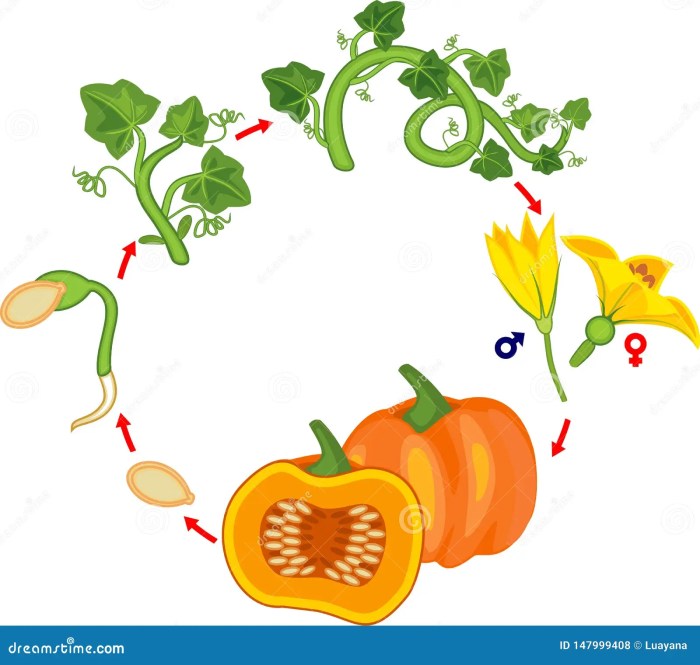
The vegetative growth stage of the pumpkin plant is characterized by rapid growth and development. During this stage, the plant produces vines, leaves, and tendrils. The vines help the plant to climb and support itself, while the leaves provide the plant with energy through photosynthesis.
The tendrils help the plant to attach itself to surfaces, such as trellises or fences.
Nutrient and Water Requirements
During the vegetative growth stage, the pumpkin plant requires a lot of nutrients and water. The plant needs nitrogen to produce leaves and vines, and phosphorus to produce flowers and fruits. The plant also needs potassium to help it resist diseases.
The plant should be watered regularly, especially during hot and dry weather.
Flowering and Pollination Stage
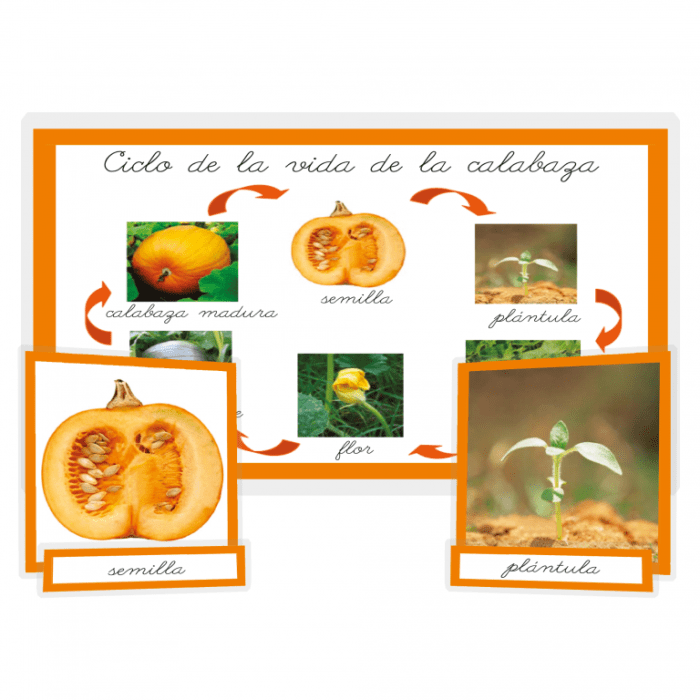
The flowering and pollination stage is a crucial phase in the pumpkin life cycle, marking the transition from vegetative growth to reproductive development. During this stage, pumpkins produce both male and female flowers, which are essential for pollination and fruit production.
Structure and Function of Male and Female Flowers
Pumpkin plants produce two distinct types of flowers: male and female. Male flowers are typically larger and more showy, with long, slender stems and a single, funnel-shaped bloom. They contain numerous stamens, which produce pollen grains.
Female flowers are smaller and less conspicuous, with a shorter, stouter stem and a bell-shaped bloom. They have a central pistil, which contains the ovary and stigma. The stigma is the receptive surface that receives pollen grains during pollination.
Pollination Process
Pollination is the process by which pollen grains are transferred from the male flower to the female flower. In pumpkins, pollination occurs primarily through the action of insects, such as bees and squash bugs. These pollinators visit the male flowers, collecting pollen on their bodies.
As they move from flower to flower, they inadvertently transfer the pollen to the stigmas of female flowers.
Once the pollen grains reach the stigma, they germinate and produce a pollen tube that grows down the style to the ovary. The pollen tube contains sperm cells, which fertilize the ovules within the ovary. This process leads to the development of pumpkin seeds and the subsequent growth of the fruit.
Role of Pollinators
Pollinators play a vital role in pumpkin production by facilitating the transfer of pollen between male and female flowers. Without pollinators, pumpkins would be unable to reproduce and produce fruit. Therefore, it is essential to support and protect pollinator populations to ensure successful pumpkin harvests.
Fruit Development and Maturation Stage
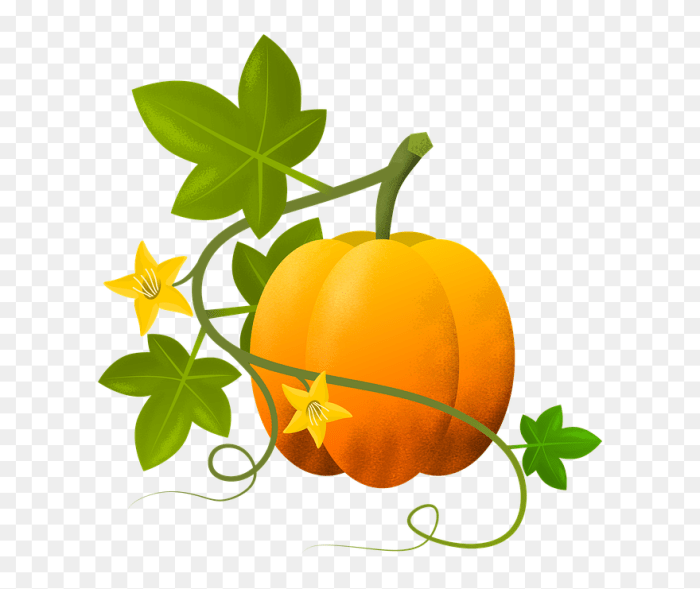
The fruit development and maturation stage is the final phase of the pumpkin’s life cycle. During this stage, the fruit undergoes significant growth and development, both externally and internally.
Size, Shape, and Color Changes, Ciclo de vida de la calabaza
As the pumpkin fruit develops, it undergoes a rapid increase in size. The fruit initially appears as a small, round ovary, but as it matures, it expands and takes on its characteristic shape, which can vary depending on the variety of pumpkin.
The fruit’s color also changes during maturation. Initially, the fruit is typically green in color, but as it ripens, it gradually turns orange or yellow. The color change is due to the production of carotenoids, which are pigments that give fruits and vegetables their orange and yellow colors.
Internal Development
While the pumpkin fruit is developing externally, significant changes are also taking place internally. The seeds, which are initially small and immature, begin to develop and mature. The seeds are embedded in a fleshy pulp, which also develops and matures during this stage.
The pulp of the pumpkin fruit is a rich source of nutrients, including vitamins, minerals, and fiber. The pulp also contains enzymes that help to break down the starch in the fruit, making it sweeter and more flavorful as it ripens.
Harvest and Storage Stage
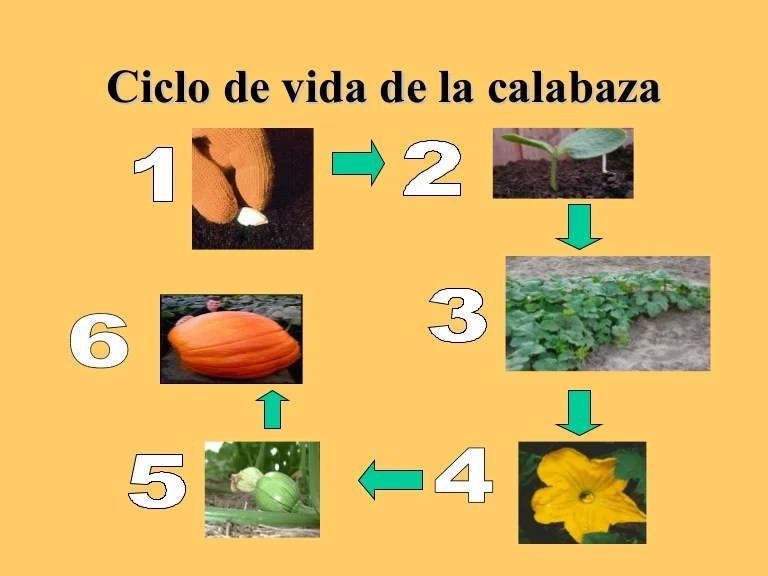
Pumpkins are ready for harvest when their skin is hard and their stems are dry and brown. The optimal time to harvest pumpkins is in the fall, after the first frost. Harvesting pumpkins too early can result in poor storage quality, while harvesting them too late can make them susceptible to frost damage.
Proper Harvesting Techniques
To harvest pumpkins, use a sharp knife to cut the stem, leaving about 2 inches of stem attached to the pumpkin. Handle the pumpkins carefully to avoid bruising them. Once harvested, pumpkins should be stored in a cool, dry place with good ventilation.
Storage Conditions and Techniques
Pumpkins can be stored for several months if they are stored in the right conditions. The ideal storage temperature for pumpkins is between 50 and 55 degrees Fahrenheit. Pumpkins should also be stored in a dark, dry place with good ventilation.
To extend the shelf life of pumpkins, they can be cured by placing them in a warm, humid environment for 10 to 14 days before storing them in their final location.
FAQ Compilation: Ciclo De Vida De La Calabaza
What are the ideal conditions for pumpkin seed germination?
Pumpkin seeds germinate best in warm, moist soil with a temperature between 70-95°F (21-35°C).
How long does it take for a pumpkin plant to reach maturity?
Depending on the variety, pumpkin plants typically take 90-120 days to reach maturity.
What are the signs that a pumpkin is ripe and ready to harvest?
Ripe pumpkins have a hard rind, a deep orange color, and a hollow sound when tapped.
How can I extend the shelf life of pumpkins?
Pumpkins can be stored in a cool, dry place with good ventilation for several months.
